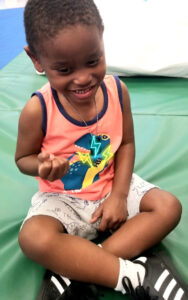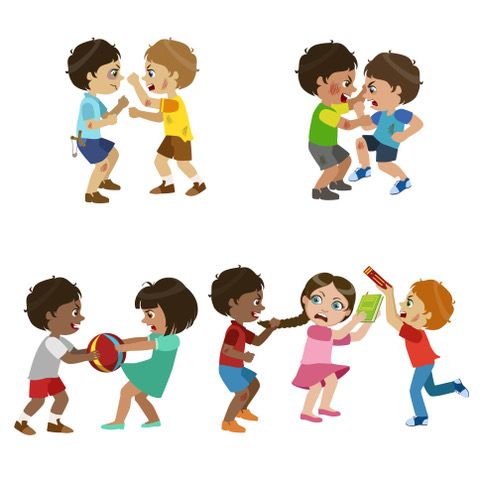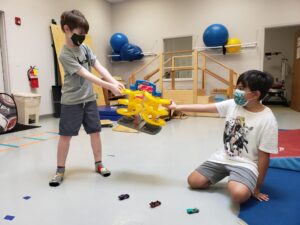Does your child struggle to play simple games, take turns, or is a sore loser? I often work with children who hate losing games or do not have the attention to wait for their turn. This blog will highlight some strategies I use to help children learn to play a board game with the whole family. I’ll break down the steps in how to take turns, select an appropriate game, and dealing with sore losers.
Taking Turns
The first skill that is important for any type of game is taking turns. While some kids might have the patience to wait their turn, others may think it is life-shattering to watch their sibling move a game piece. Here are some ideas you can use to help your child understand to wait their turn:
- Carpet Squares: have your child sit on something like a piece of carpet, towel, or piece of paper. This is their spot to keep their body for the game.
- Sit at the Table: if your child has trouble sitting still on the floor, then move to the table. Have a firm chair that allows their feet to rest on the floor or footrest.
- Take a Break: playing a 5-minute game may be too long for your child to handle at first. Simply take play 1 or 2 rounds of turn-taking then take a break! Then go back to the game where you left off or end the game. If your child successfully takes a couple turns without becoming upset or distracted, then you can always end the game.
- Use your Words: To help a child understand turn-taking, use your voice to label “my turn” and “your turn”. At the beginning of each turn, the child can say whose turn it is. This will help them understand that there are times when they have to wait.
- Change the Rules: Some games involve stealing pieces, losing a turn, or more complex rules. Make the rules easier by eliminating complex rules or make up your own rules to allow for simple turn-taking.
- Work in Teams: Use the buddy system to have your child play with an adult or an older sibling who can help them follow the rules.
Selecting a Game
Choose a game appropriate for your child’s physical and cognitive level. If you find that age level games are too difficult, then move to easier games! This is not a one size fits all. First, start with a simple cause and effect game that your child is motivated to play. As you read down the list the games will become harder.
Cause and Effect Games (Pop Up Pirate)
If you are just starting out teaching your child to play a game, choose simple cause and effect games. Cause and effect games offer quick responses to the child’s action and often do not require a lot of skill. There are simple games that involve quick turn-taking and moving pieces.
Simple Games (Candy Land, Pete the Cat Groovy Button Game, Sneaky Snacky Squirrel)
Now that your child has mastered taking turns, can count 1-10, and knows their colors, you can start with simple board games.
Medium Difficulty Games (Guess Who, Don’t Break the Ice, Spot It)
Here your child is learning to use strategy skills to win a game. The games may involve more rules to follow than before.
Strategy Games (Connect 4, Uno)
Finally, you are ready to play games with complex strategies or require more time to complete.
Card Games (Phase 10, Go Fish, Games for Standard Deck of Cards)
There are several varieties of card games available that range in difficulty from easy to complex. Card games are a great way to work on matching, fine motor manipulation skills to move the cards, and executive functioning skills to use strategy to win.
Sore Losers
One major barrier to family game night is that no one wants to play with a sore loser. We’ve all played a game with a child, or even an adult, who is a sore loser- it’s not fun for anyone! Here are some ideas:
- Practice What to Say: Before the game even starts, role-play what everyone would say if they lost or won a game. “Good game!” “Better luck next time!” “Maybe next time I will win!” “That’s ok, I tried my best”. You also need to practice letting your child lose! Do not let them win every game.
- Be the Role Model: If you win against a sore loser, so those phrases above that you practiced during the game. Do not have the winner have a big party. The winner can be excited but does not need to be over the top to hurt other’s feelings.
- Team Games: Play in teams so a child that has trouble playing a game can win every once in a while.
- Stop: If your child is becoming out of hand- stop the game and start later when they are calm.
If you find that your child continues to have difficulty with fine motor skills to operate pieces, understand steps and sequencing to play games, or continue to have tantrums over losing, then we invite you to request a free consultation to discuss how occupational therapy, speech therapy, or physical therapy may help your child want to play games.
Written by: Megan Wilkison, Occupational Therapist













